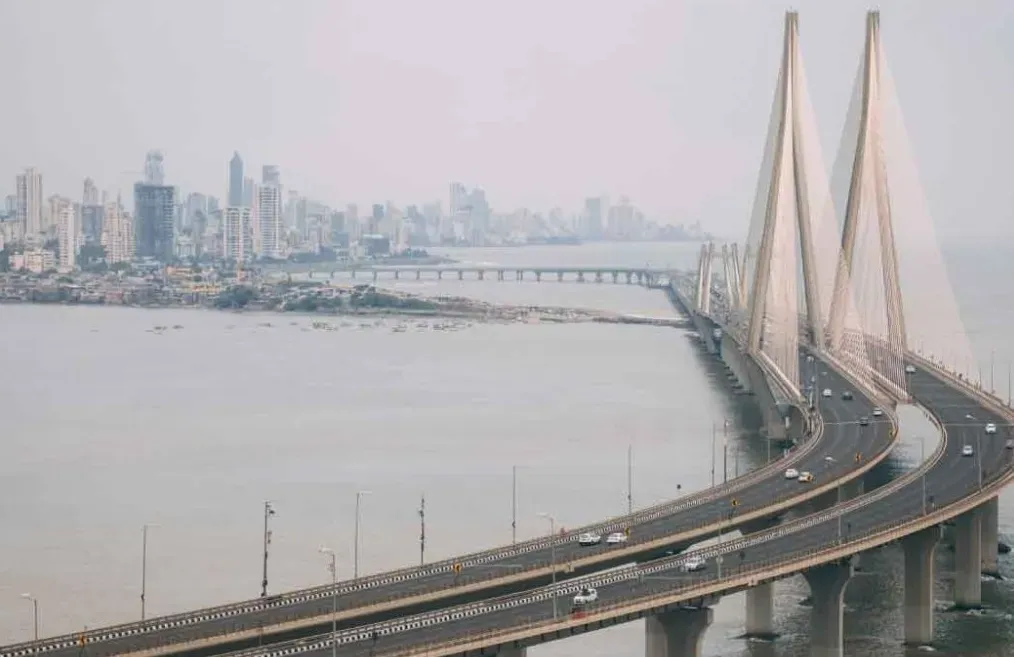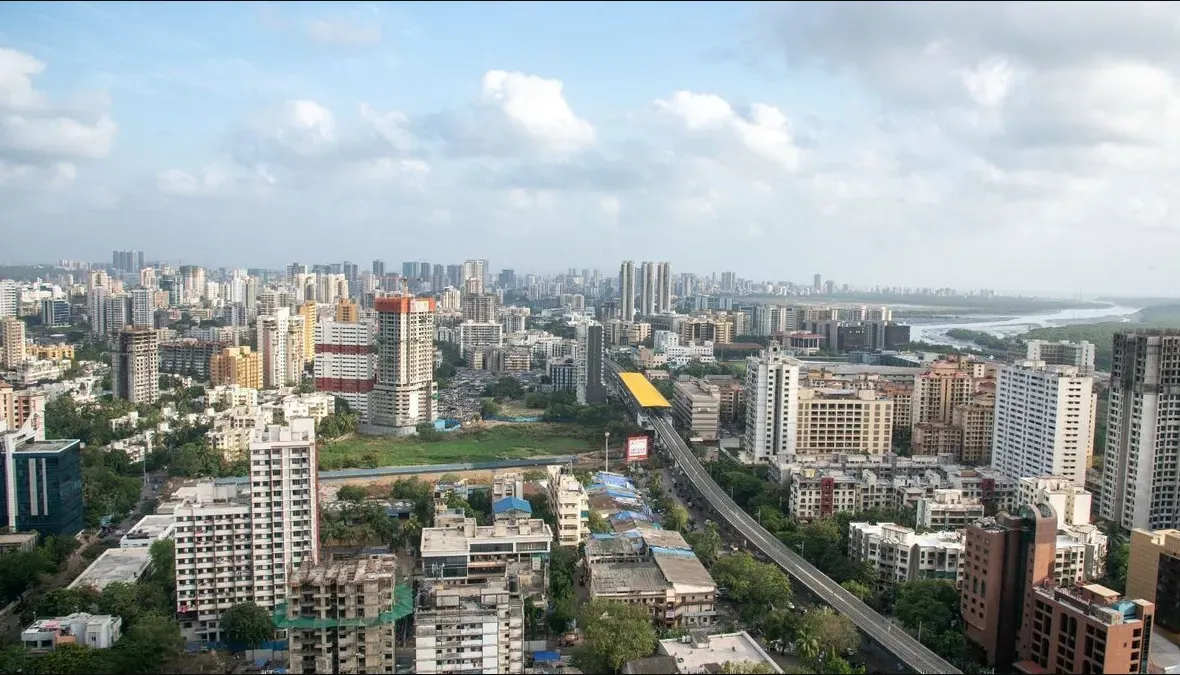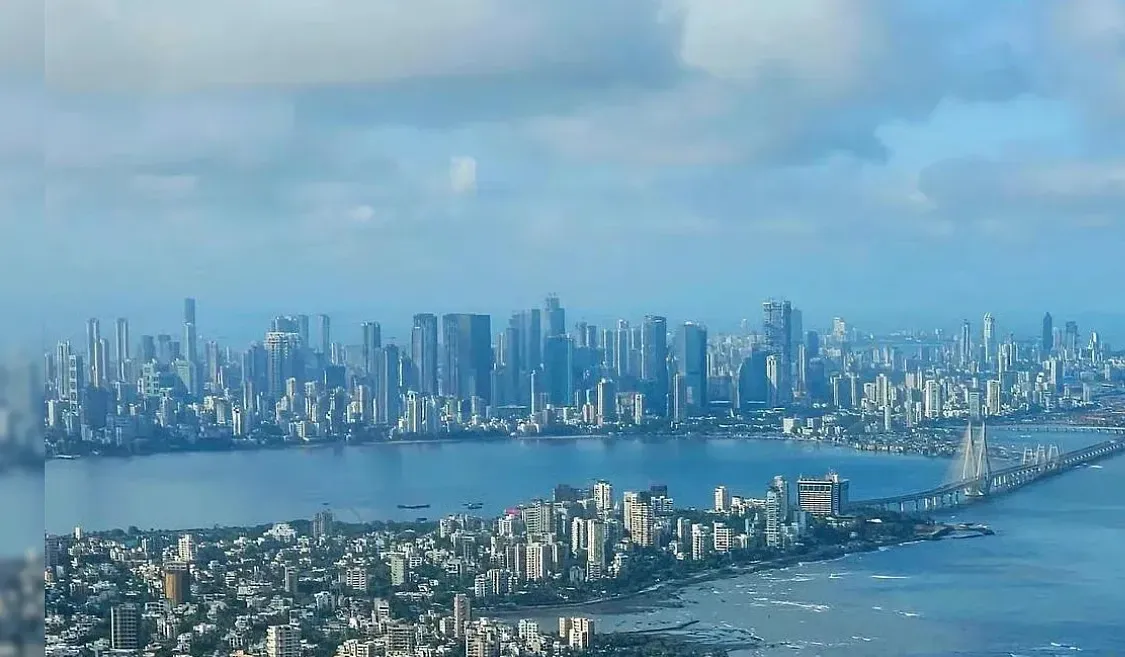South Mumbai vs Western Suburbs: Where Should You Buy a 4 BHK?

By
Shrusti Naik
Posted on October 31, 2025. 10 mins

Introduction

Choosing the right location when buying a 4 BHK in Mumbai is more than picking a large floor plan. It involves weighing neighbourhoods, future infrastructure, capital appreciation, resale demand and cost realities. Two micro-markets often compared: the prestigious South Mumbai (island city and prime zones) and the comparatively expansive Western Suburbs (Andheri-Borivali corridor and beyond).
Which one offers the better 4 BHK investment in 2025? This article examines data-driven comparison, price per sq. ft, demand drivers, supply dynamics, taxation/regulatory context and gives actionable take-aways for an Indian homebuyer or investor. Also take a look at Demand Trends in 2025
Key Stats at a Glance
- In Q2 2025, the weighted average price for Mumbai stood at ~₹21,318 per sq ft, up 5% QoQ and 7% YoY. (mchi.net)
- For South Mumbai, Q2 2025 average was ~₹92,000 per sq ft; for Western Suburbs ~₹31,500 per sq ft. (mchi.net)
- Price range in 2025 for South Mumbai premium homes ~₹27,000-₹88,000 per sq ft; Western Suburbs ~₹14,000–₹62,000 per sq ft. (Houssed)
Interpretation: A 4 BHK in South Mumbai commands roughly 3× the sq ft price of Western Suburbs, so the decision hinges on your budget, risk appetite, use case (home vs investment), and liquidity horizon.
The Market Landscape
South Mumbai – Prestige, Scarcity, High Ticket
South Mumbai (areas like Malabar Hill, Colaba, Cuffe Parade) benefits from legacy status, waterfront views, low new supply and ultra-premium pricing. In Q2 2025, its average price was ~₹92,000/sq ft. (mchi.net)
Strengths
- Scarcity of land leads to supply constraint and pricing power.
- Trophy homes appeal to ultra-HNI, NRI buyers and investors looking for safe capital park.
- Traditionally excellent resale appeal and rental demand in ultra-luxury segment.
Challenges
- Ticket size is very high; 4 BHK costs easily run into ₹30 crore+ or more (given large unit area at ₹90k+/sq ft).
- Liquidity can be slower in downturn since buyer pool is niche.
- Maintenance, parking, society costs can be extremely high; and large 4 BHK footprint may imply large monthly charges.
- For many buyers, the premium may not justify the practical use if they spend little time there.
H3: Western Suburbs – Scale, Connectivity, Value
Western Suburbs (Andheri West/East, Borivli, Jogeshwari, Kandivali) are more expansive, newer developments, better connectivity to airports/IT hubs and relatively lower entry cost. Price average ~₹31,500/sq ft in Q2 2025. (mchi.net)
Strengths
- Better value for money: at ~₹30k/sq ft, a 4 BHK of 2,000 sq ft would cost ~₹6 crore – much lower than South Mumbai.
- Higher growth potential in emerging nodes, with large redevelopment activity (e.g. ~32,000+ new homes in Western Suburbs via redevelopment by 2030) (The Times of India)
- Stronger affordability => larger buyer pool, making buyer / rental demand stronger for 4 BHK.
- Good connectivity (metro, highway, airport) improving further.
Challenges
- Because price levels are lower, the absolute upside may be less dramatic than trophy-homes.
- Resale of large 4 BHK might still take time if supply floods in future (redevelopment supply significant).
- Premium brand or finish might fetch less premium compared to island-city addresses.
Comparison Table – South Mumbai vs Western Suburbs for a 4 BHK
| Parameter | South Mumbai | Western Suburbs |
|---|---|---|
| Approx. price/sq ft (Q2/2025) | ~₹92,000 | ~₹31,500 |
| Typical 4 BHK cost (2,000 sq ft) | ~₹18.4 crore (2,000 × ₹92k) | ~₹6.3 crore (2,000 × ₹31.5k) |
| Buyer pool size | Small niche (HNI/UHNI) | Larger range (large families, upgraders) |
| Liquidity / resale speed | Slower for very high ticket units | Relatively more buyers, better resale potential |
| Growth potential | Moderate–low (already priced high) | Higher relative growth potential |
| Cost to own (maintenance etc) | Very high | Lower comparatively |
| Risk vs reward | High reward, high risk | Balanced risk-return |
Also read If Are 4BHKs in Mumbai a Good Investment or Just a Lifestyle Choice
Which One Should You Choose and When?
If you should go for South Mumbai:
- You have very high budget (₹15 crore+ easily).
- You value location prestige, trophy status or long-term capital preservation.
- You are less sensitive to time-to-liquidity, and you treat the purchase as long-term hold.
- You prefer mature infrastructure, minimum commute hassle, high-grade neighbourhood.
If Western Suburbs make more sense:
- Your budget is moderate (₹5-10 crore for a good 4 BHK) and you prefer value.
- You are a large family seeking space and good location connectivity rather than luxurious locale.
- You view the 4 BHK as both home and investment, with reasonable upside and better liquidity.
- You are okay with being in an emerging micro-market rather than legacy core.
Regulatory, Tax & Cost Considerations
- Stamp duty/registration: In Maharashtra, stamp duty is 6% (men) / 5% (women) plus fixed registration for high-value homes. These costs scale with ticket size.
- Capital gains tax: Large ticket high-price homes will yield higher absolute capital gains and thus higher tax. If property held >24 months: LTCG @ 20% + indexation.
- Maintenance & society charges: For large 4 BHKs in South Mumbai, society charges may be significantly higher due to premium amenities.
- Supply risk: In Western Suburbs especially, large redevelopment supply (~32k+ units to 2030) may exert pressure on future appreciation. (The Times of India)
- Affordability & borrowing: If buying via home-loan, a multi-crore property means higher EMI, higher risk. Ensure EMI/income ratio remains under control.
Check out South Mumbai vs Western Suburbs: Where Should You Buy a 4 BHK?
Take-aways for Indian Retail Investors & Homebuyers
- If you buy in South Mumbai, treat it as a long-term capital preservation and trophy investment; liquidity may be slower but status is strongest.
- In Western Suburbs you can get a large 4 BHK at a lower cost and still benefit from appreciation potential; ideal for families or upgraders.
- Prioritise micro-market within region: even Western Suburbs have pockets that outperform (e.g. near metro, airport).
- For both: inspect unit size (2,000 sq. ft or more typical for 4 BHK), developer reputation, amenities, completion status.
- Factor all costs: ticket size, stamp duty, maintenance, parking. Often a 4 BHK may add 10-15% extra carrying cost over a smaller unit.
- Liquidity buffer: With higher ticket size, you may hold longer—so ensure financial flexibility.
- Choose based on your usage and exit plan: Are you living long term, or investing to sell? Location choice differs.
Also read, Upcoming Mumbai Metro Corridors and Their Impact on 2BHK Property Values
Conclusion

Deciding between South Mumbai vs Western Suburbs for a best 4 BHK investment boils down to your financial capacity, lifestyle demands and time horizon. South Mumbai offers prestige, enduring value, but at very high cost and limited buyer pool. Western Suburbs offer value, space, connectivity and broader buyer base, making them a strong choice for large-unit buyers in 2025.
If you prioritise status and have deep pockets, target South Mumbai. If you seek a large 4 BHK, value and future growth, Western Suburbs may be the wiser play. Either way, due diligence, clarity on costs, and alignment with your long-term plan are key.
Frequently Asked Questions
1. Is South Mumbai always better than Western Suburbs for 4 BHK? Not necessarily. While South Mumbai has higher price per sq ft and prestige, Western Suburbs may offer better value, growth and liquidity for a comparable large-unit purchase.
2. What typical cost difference should I expect for a 4 BHK? In Q2 2025, average South Mumbai price ~₹92,000/sq ft vs Western Suburbs ~₹31,500/sq ft. So a 2,000 sq ft 4 BHK could cost ~₹18 crore in South Mumbai vs ~₹6 crore in Western Suburbs. (mchi.net)
3. Will Western Suburbs appreciate faster than South Mumbai? Potentially yes, since Western Suburbs have more room for price growth. But South Mumbai may offer steadier capital preservation. According to estimates, Western Suburbs appreciation ~7-10% vs South Mumbai ~10-15% in some reports. (ssbrealtors.com)
4. Are there emerging supply risks in Western Suburbs for large apartments? Yes. Redevelopment in the Western Suburbs is expected to add ~32,000+ new homes by 2030, which could increase competition. (The Times of India)
5. What should a buyer check before buying a 4 BHK in either region? Key checks: unit size and layout, developer credibility, possession date, amenities, maintenance charges, parking, resale demand, connectivity and future infrastructure.
References
- “Mumbai Property Prices 2025: Trends & Investment Guide”, Housivity, 2025. (housivity.com)
- “Mumbai Residential Real Estate Market Q2 2025”, CREDAI-MCHI, Aug 2025. (mchi.net)
- “Property Price & Trends in Western Suburbs, Mumbai”, Housing.com, 2025. (Housing)
- “Property Rates in Mumbai 2025 | Latest Trends & Prices”, Houssed, 2025. (Houssed)
- “India Real Estate Average Property Appreciation Rate in Mumbai 2025”, SSBRealtors, 2025. (ssbrealtors.com)
- “Mumbai real-estate 2025 – Top 5 Areas for Apartment Buyers”, RealtyNXT, Jan 2025. (RealtyNXT)
- “Society redevelopment projects will add ~44 k apartments in Mumbai by 2030: report”, Times of India, Sept 2025. (The Times of India)